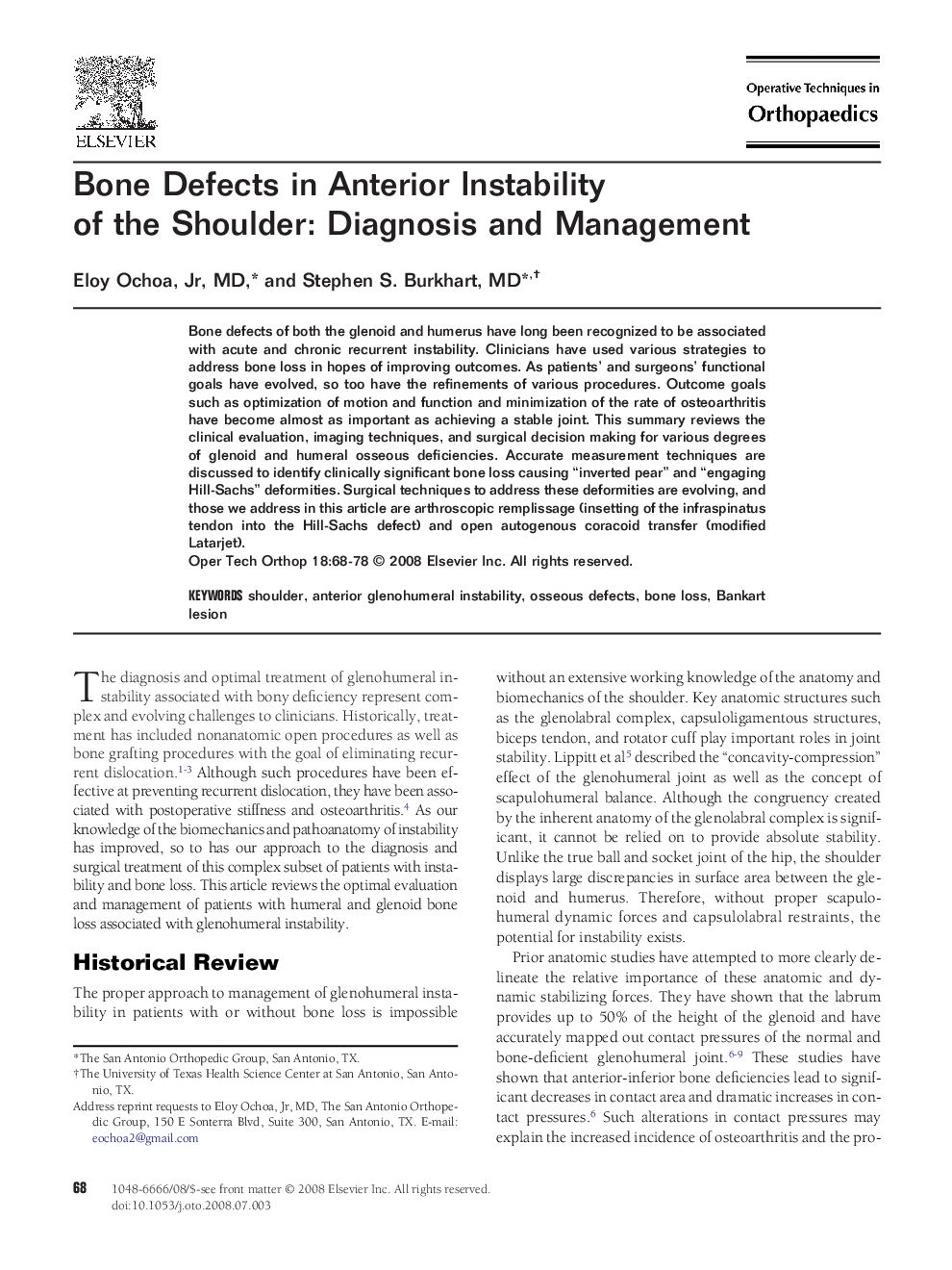| Article ID | Journal | Published Year | Pages | File Type |
|---|---|---|---|---|
| 4079247 | Operative Techniques in Orthopaedics | 2008 | 11 Pages |
Abstract
Bone defects of both the glenoid and humerus have long been recognized to be associated with acute and chronic recurrent instability. Clinicians have used various strategies to address bone loss in hopes of improving outcomes. As patients' and surgeons' functional goals have evolved, so too have the refinements of various procedures. Outcome goals such as optimization of motion and function and minimization of the rate of osteoarthritis have become almost as important as achieving a stable joint. This summary reviews the clinical evaluation, imaging techniques, and surgical decision making for various degrees of glenoid and humeral osseous deficiencies. Accurate measurement techniques are discussed to identify clinically significant bone loss causing “inverted pear” and “engaging Hill-Sachs” deformities. Surgical techniques to address these deformities are evolving, and those we address in this article are arthroscopic remplissage (insetting of the infraspinatus tendon into the Hill-Sachs defect) and open autogenous coracoid transfer (modified Latarjet).
Related Topics
Health Sciences
Medicine and Dentistry
Orthopedics, Sports Medicine and Rehabilitation
Authors
Eloy MD, Stephen S. MD,
